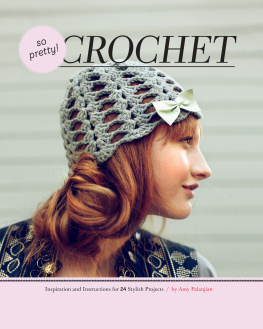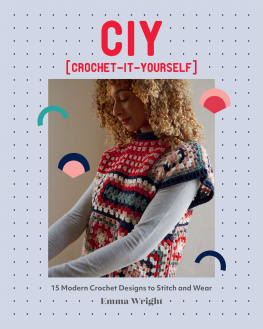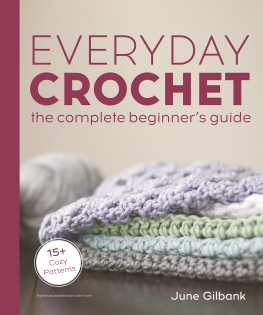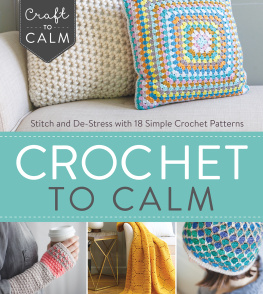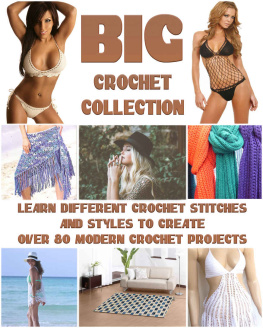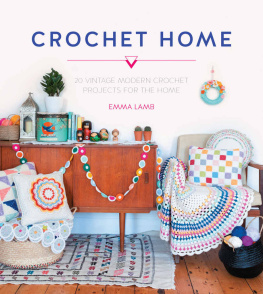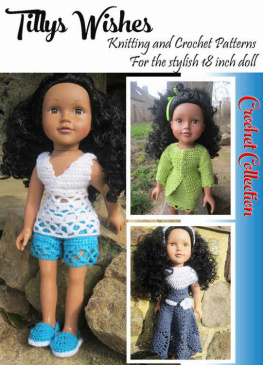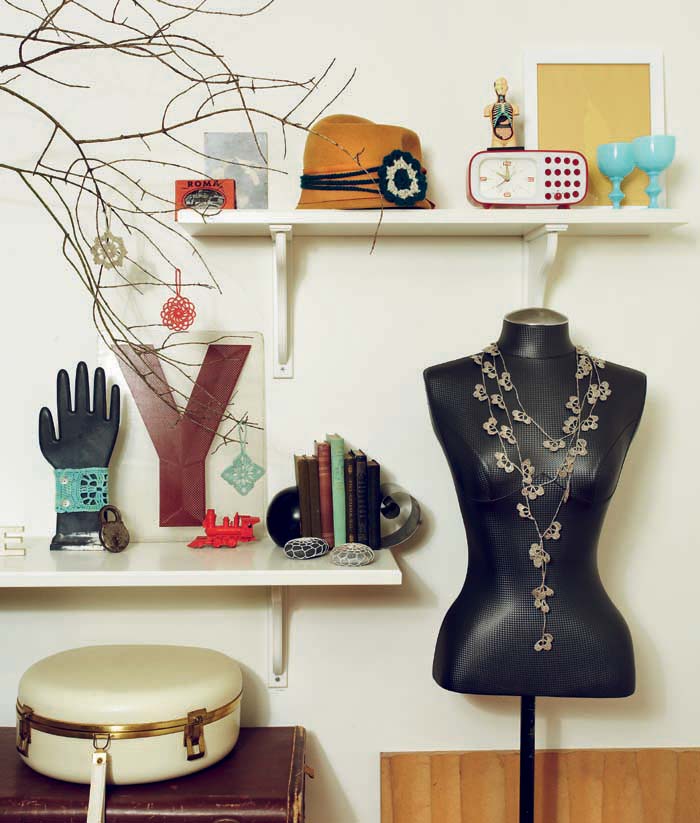
A s a magazine editor and avid blog reader, I see hundreds of craft projects, products, and patterns each week. But the ones that catch my eye are the ones that come with a storya story that explains a bit about the woman behind each handmade item. I love knowing what inspired her to be creative and in what context she explored her craft. Knowing the backstory allows me to connect with both the person and the craft on a more intimate level.
Crochet has benefited greatly from an explosion of women interpreting the craft on their own terms and sharing their stories of creative pursuits. No longer is it only a means to make an afghan, but the essential identity of crochet has expanded. Its now a way to make intricate jewelry, including necklaces, bracelets, and rings, using leather and thread as delicate as lace. Its a means to create personal accessories, like mittens and hats, using the finest cashmere worked with an eye on the smallest details. Its also a method to create home accessories like pillows, rugs, and bowls, using repurposed materials, reinterpreted patterns, and improvised techniques. In fact, crochet has gone so far from the stuffy image it had a few decades ago that at first glance, you might not even realize that some of the projects in this book are made with a crochet hook.
More importantly, though, for a growing community of women all over the world, exploring crochet with their own unique perspectives is a way to take knowledge thats been handed downwhether from a grandmother, an aunt, an online friend, or even a trusted bookand distill it according to their own preferences. So at the same time that the projects in this book give a nod to traditions and shared learning, there is a decided leaning forward, a stretching of the basic idea of crochet into something more inclusive and interesting.
The innovation in this one category of craft speaks to our growing need to balance our modern, busy lives with physical handiwork. More and more of us feel a deep need to make things with our hands in order to feel grounded in the rest of our lives. It helps us to feel a sense of accomplishmentto calm our minds with deliberate (and often repeti-tive and soothing) work. Considered this way, the act of sitting down to crochet a new necklace or a table runner is almost an act of self-preservation. And increasingly, its a way to show the world who we are and what were capable ofon our own creative terms.
In this book, youll find a mix of projects that demonstrate these ideas. The twelve contributorsfrom countries around the world, including the United States, Portugal, Latvia, Cyprus, and Australiaeach offer up two incredibly unique crochet projects that show off their personalities and individual skills. They include jewelry like a looped necklace, stacked leather rings, a lariat, and a cuff bracelet; home accessories including nesting bowls, ornaments, a pillow cover, and bunting; and personal accessories such as scalloped wristlets, mittens, a sweet hat, a darling pouch, and much, much more. The range of projects will give you room to play with new skills, explore new ideas, and entertain your own creative sparks. To me, this diversity in the interpretation of crochet is truly inspiring, so go, turn the page, crochet yourself some treats, and enjoy learning from these incredibly crafty women.
Amy
Crochet is a craft that involves relatively few supplies. Stock up on quality notions and tools, and youll have them for years to come.
EMBROIDERY THREAD
Often made with six strands woven together, embroidery thread is used to embellish projects or to work very fine crochet. It is also known as embroidery floss and is available in cotton, linen, metallic, and rayon.
HOOKS
The basic tool for crochet comes in plastic, bamboo, and aluminum, and choosing your preferred material is really up to you since each feels slightly differently in hand. The lower the number, the smaller the hook, and the thinner the thread or yarn that you will use with it. Higher-numbered hook sizes are usually used with thicker yarns. Here are the standard sizes in letter, number, and millimeter (mm), which may or may not all appear on a yarn or thread labelit depends on where you live and the manufacturer. (Though there will always be at least one measurement for your reference.)
| Size B/1/2.25 mm | Size K/10.5/6.5 mm |
| Size C/2/2.75 mm | Size L/11/8 mm |
| Size D/3/3.25 mm | Size M/13/9 mm |
| Size E/4/3.5 mm | Size N/15/10 mm |
| Size F/5/3.75 mm | Size P/16/11.5 mm |
Size G/6/4 mm or
4.25 mm | Size Q/19/16 mm |
| Size R/27/17 mm |
| Size 7/4.5 mm | Size S/35/19 mm |
| Size H/8/5 mm | Size T/42/22 mm |
| Size I/9/5.5 mm | Size U/50/25 mm |
| Size J/10/6 mm | Size V/28 mm |
Note: There are also tiny steel hooks that are used for projects with more intricate stitches. They have their own numbering system, which runs from Size 00 (3.5 mm; the largest) through Size 14 (.75 mm; the smallest). Measurements can vary, so pay most attention to the mm called for to avoid the otherwise inevitable confusion.
SCISSORS
A pair of small scissors will suffice for most projects and will fit into any portable sewing kit. Ginghers 4- or 5-inch Knife-Edge Embroidery Scissors come with a protective cover for safe storage and are sharp enough to prevent your yarn from fraying when you snip (available at gingher.com). A pair of blunt-edge baby scissors (available at most drugstores) is also a safe option for crocheters with kids (or pets) around.
SEWING THREAD
Since some inexpensive sewing thread breaks easily due to poor quality, look for cotton or hand-quilting thread by Guetermann, or cotton-covered polyester Button & Craft thread by Coats & Clark. Both are strong and durable options.
TAPESTRY NEEDLE
This type of needle is thick with a big eye, which is helpful for threading thicker yarns when its time to weave in your ends or sew pieces of a project together.
approx = approximately
beg = begin or beginning
CC = contrast color
ch = chain stitch(es)
ch-sp = space previously made
dc = double crochet
dec = decrease(s)(ing)
hdc = half double crochet
inc = increase(es)(ing)
MC = main color
rep = repeat(s)(ing)
rnd(s) = round(s)
RS = right side
rsc = reverse single crochet
sc = single crochet
sc2tog = single crochet 2 together
sk = skip
sl = slip
sl st = slip stitch
sp(s) = space(s)
st(s) = stitch(es)
t-ch = turning chain
tbl = through back loop

